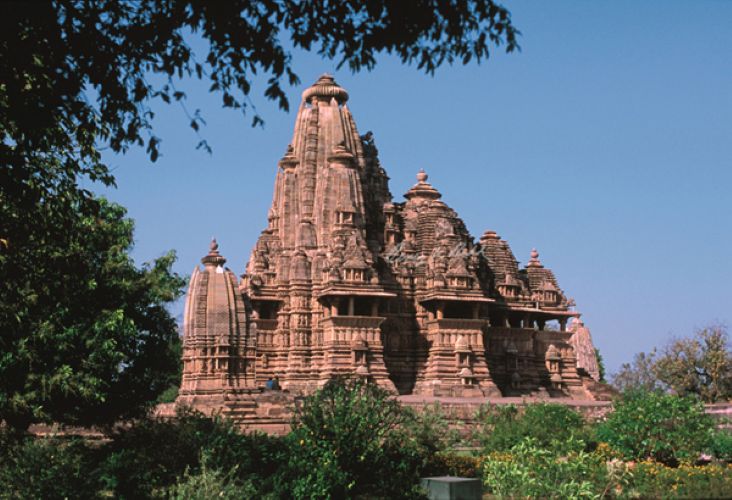ECSTASY IN STONE: KHAJURAHO

Vishwanath temple, Khajuraho
Benoy K Behl
At Khajuraho, between the 10th and 12th centuries, was created one of the most splendid temple cities in the history of the world.
The temples of Khajuraho form a strikingly homogenous group and were all made within a relatively short period of time. The concerted effort of making so many grand temples in one place speaks of the dynasty’s desire to create a great centre of worship and learning.
By this time, the Indian temple form had fully developed. The entire temple was a manifestation of the deity in the inner sanctum or garbha-griha. The devotee came here with the aspiration of self-transcendence: to look upon the deity within and to receive grace, to awaken the best within himself or herself.
As he circumambulated the temple, he was met by the images of the world around him: the world of forms which was familiar to him. Here, he saw them in their true context, as all being but a manifestation of a single reality, which is divine.
There is an exuberance of details in these panels which speaks of the vitality and prosperity of the times. Great armies, musicians and hunters march in an endless procession around the entire base of these temples.
These moments frozen in stone are also valuable as they are a rare record of society then.
The response to the beauty of the world has always been regarded in Indian philosophy to be a stepping stone towards enlightenment. It has been believed that the perception of beauty is a view of the grace which underlies all of creation. Thus, the depiction of beauty has always been a dominant theme for the Indian artist. Since earliest times, the auspicious figure of the woman has been one of the main vehicles for the communication of this grace. She has also symbolized the fertility of nature, which ensures the continuance of life.
There is a profusion of depictions of women, in every possible posture. They portray the rich abundance of nature and the joy of life. It is a celebration of woman in her myriad moods and moments- writing a letter..applying kohl to her eyes… drying her hair, playing with a ball, looking into a mirror, painting her feet, pulling out a thorn….Woman… innocent, coquettish, smiling… infinitely beautiful; depicted in a wealth of detail, sharply etched and chiselled with consummate skill.
By this period, the temple has become a complex form, in which the numerous parts are seen in their relation to the whole. These fine sculptures are each beautiful in their own right. They are also all related and have their meaning in context of their each being a manifestation of the ultimate reality in the garbha-griha or womb chamber within.
Under the Glimpses of Culture series, India Habitat Centre presents an online talk and
screening of the film ‘The Roof of the World’ ((Early Monasteries of the trans-Himalayas)
produced by Benoy K Behl for Doordarshan on April 26, 6pm. Click here to join

